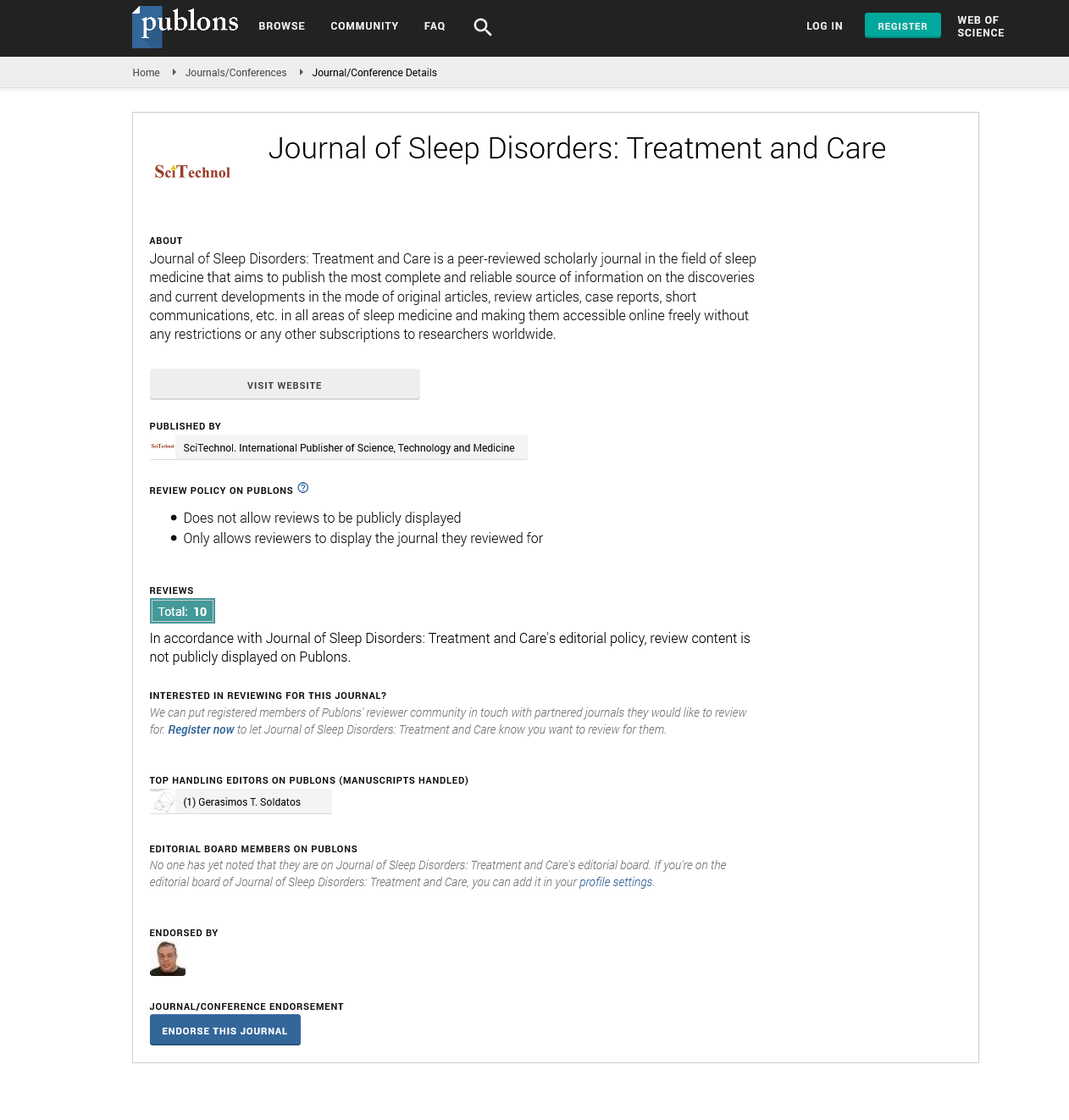Opinion Article, J Sleep Disor Treat Care Vol: 13 Issue: 1
The Role of Continuous Positive Airway Pressure (CPAP) Therapy in Managing Sleep Apnea
Xi Pang Liu*
1Department of Psychology, Southwest University, Beibei, Chongqing, China
*Corresponding Author: Xi Pang Liu,
Department of Psychology, Southwest
University, Beibei, Chongqing, China
E-mail: xipangl@gmail.com
Received date: 17 September, 2024, Manuscript No. JSDTC-24-148336;
Editor assigned date: 19 September, 2024, PreQC No. JSDTC-24-148336 (PQ);
Reviewed date: 03 October, 2024, QC No. JSDTC-24-148336;
Revised date: 10 October, 2024, Manuscript No. JSDTC-24-148336 (R);
Published date: 18 October, 2024, DOI No: 10.4172/2325-9639.1000162.
Citation: Liu XP (2024) The Role of Continuous Positive Airway Pressure (CPAP) Therapy in Managing Sleep Apnea. J Sleep Disor Treat Care 13:1.
Abstract
Description
Continuous Positive Airway Pressure (CPAP) therapy is widely recognized as the most effective treatment for Obstructive Sleep Apnea (OSA), a disorder where breathing repeatedly stops and starts during sleep. CPAP therapy involves the use of a machine that delivers a steady stream of pressurized air through a mask to keep the airway open, preventing the obstruction that characterizes OSA. This therapy has played a major role in improving the quality of life for millions of people with sleep apnea by restoring normal sleep patterns and reducing the associated health risks. OSA occurs when the muscles in the throat relax excessively during sleep, causing the airway to become blocked. This results in interrupted breathing, decreased oxygen levels and frequent awakenings throughout the night. If left untreated, sleep apnea can lead to a host of serious health issues, including cardiovascular diseases, hypertension, stroke, diabetes and cognitive impairment. Additionally, daytime fatigue, poor concentration and an increased risk of accidents are common consequences of untreated OSA.
CPAP therapy directly addresses the airway obstruction that underlies OSA. By providing a continuous flow of air at a prescribed pressure, CPAP machines prevent the collapse of the upper airway, allowing individuals to breathe normally throughout the night. The benefits of CPAP therapy are immediate: Users typically experience fewer apnea events, improved oxygen saturation and deeper, uninterrupted sleep. This translates to better daytime alertness, mood stabilization and overall improved well-being. One of the most significant advantages of CPAP therapy is its ability to diminish the long-term health risks associated with sleep apnea. For instance, untreated OSA is strongly linked to cardiovascular diseases. Repeated episodes of low oxygen during the night cause oxidative stress, increase inflammation and elevate blood pressure, all of which contribute to heart disease. CPAP therapy helps reduce blood pressure and lowers the risk of heart attack and stroke by ensuring regular oxygen supply during sleep.
Despite its proven effectiveness, adherence to CPAP therapy can be a challenge for some individuals. Common issues include discomfort with the mask, dryness in the nose or throat and difficulties in falling asleep while using the device. However, advancements in CPAP technology have addressed many of these concerns. Today’s machines are quieter, more compact and come with features like heated humidifiers to alleviate dryness and more comfortable mask designs to improve the user experience. Moreover, healthcare providers can often tailor the settings on CPAP machines to better suit individual needs, improving adherence. Another key factor in the success of CPAP therapy is patient education and support. Sleep specialists play a major role in helping patients understand the importance of consistent use, troubleshooting problems and providing encouragement. Many CPAP users find that as they become accustomed to the device, their initial discomfort diminishes and the positive effects on their health and wellbeing become more apparent.
In conclusion, CPAP therapy is the basis of treatment for obstructive sleep apnea. Its ability to maintain an open airway during sleep significantly improves sleep quality, reduces the risk of serious health complications and enhances overall quality of life. While initial adjustment to the therapy may be challenging for some, the long-term benefits of CPAP far outweigh the difficulties, making it a vital intervention in the management of sleep apnea. Through continued technological advancements and patient education, CPAP therapy will remain a key player in combating this common and potentially dangerous sleep disorder.
 Spanish
Spanish  Chinese
Chinese  Russian
Russian  German
German  French
French  Japanese
Japanese  Portuguese
Portuguese  Hindi
Hindi 
